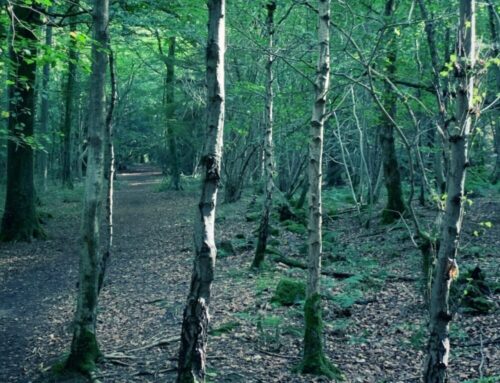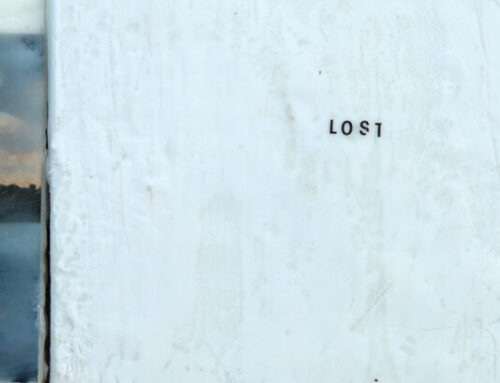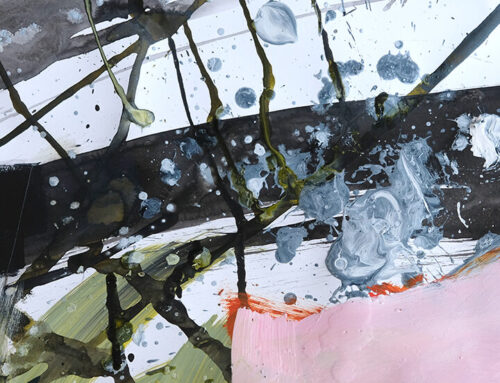“The mountain has left me feeling renewed, more content and positive than I’ve been for weeks, as if something has been given back after a long absence, as if my eyes have opened once again. For this time at least, I’ve let myself be rooted in the unshakable sanity of the senses, spared my mind the burden of too much thinking, turned myself outward to experience the world and inward to savor the pleasures it has given me.”
Richard Nelson, The Island Within

A week in a cold , temperate Alpine climate wasn’t top of my list (this time last year we were in South Africa) but the family is a democracy (except when it’s not; but this time I was willing to go with the popular vote). I am happily eating my hat now as I confess it was one of our best trips en famille. Something for everyone, all and more than we were hoping for. We stayed in Zermatt, a classy-sparkly not-quite-kitsch Alpine village-town with a distinctly Hygge vibe, accessible to us only by the vertiginous but immaculate Matterhorn Express. We found the perfect Airbnb hosted by wonderful Ashley, now a firm family friend and who I am sure we will meet again.
With plenty to satisfy our sporting, prandial and creative appetites we slept soundly at night to be woken by the explosive dawn chorus of the avalanche busting team high up on the slopes making the pistes safe for the skiers.
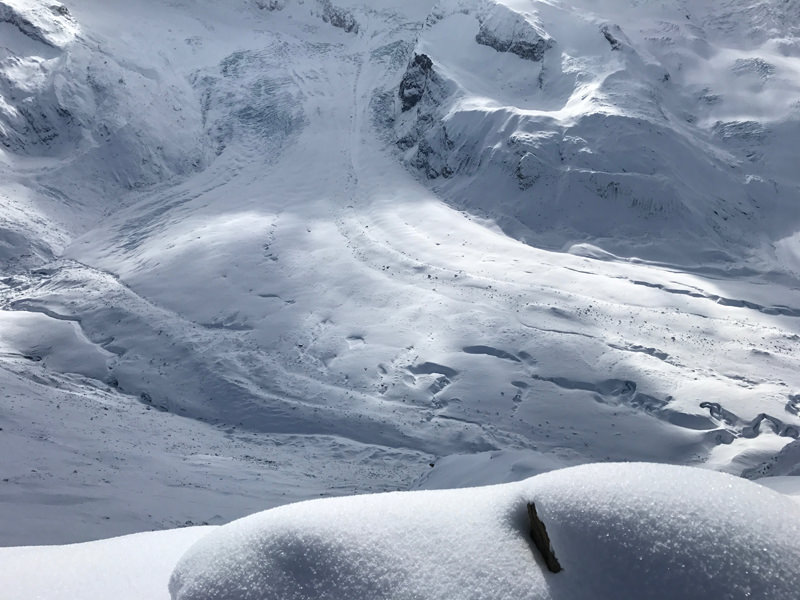
The hardcore skiers found plenty to challenge them en piste and at the apres-ski afterwards. The real advantage of Zermatt to a mixed group is that there is plenty to stimulate the active non- skier too. (Me.) There are numerous winter hiking trails which with a bit of careful navigation and a smattering of faith in one’s sense of direction allowed me to meet up with the skiers at lunchtime for gluhwein and rosti. Fortunately it’s always downhill after lunch…
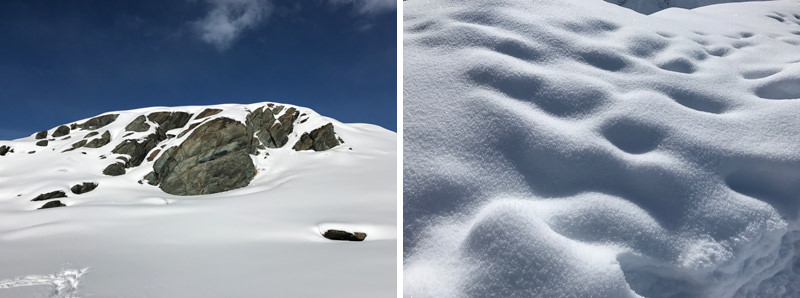
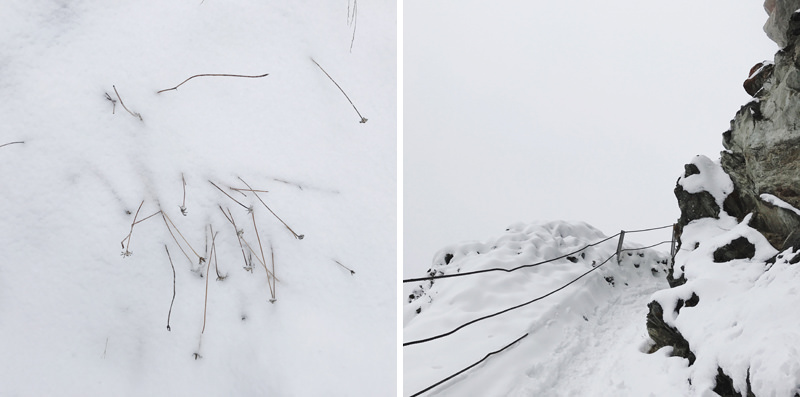
I haven’t visited the Alps since a geography field trip in 1984; which I know was a lifetime ago but in geological terms I don’t think the mountains have changed much. They still stand quiet and untroubled by the mortal anxieties and vulnerabilities of the humankinds that speckle their lower slopes.
The Matterhorn stands as a beacon in the landscape, an unmoving point to orient and anchor us. We know where we are if we can see this silent mountain, in the same way as we navigate by the North Star. Ironically though I found the sight of her at such close quarters disorienting, discombobulating almost. A reminder that my self-centred concerns are the beat of a moth wing in the bigger picture.
I got to thinking. The Matterhorn bears her distinctive and revered pyramidal shape as a result of the forces of erosion that have worked upon her as centuries of ice have frozen and thawed and glaciers have spooned away each side leaving a frost shattered peak irresistible to climbers, photographers and awe struck ramblers like me. What’s left is the hard core; the strength; the iconic landmark and inspiration. What she sacrificed as a result of centuries of attrition and erosion we can barely conceive; her submission to the elements as tons of rock was worn away and ground to fertile soils to benefit the valleys below. It is a process that never ends. Still the tectonic plates that formed the Alps shift and nudge; the mountains rise, are weathered away; the contours shapeshifting over time as do our own mortal characteristics. We are all , at the same time, incomplete and emerging; yet what lies within us is the core of empowerment and happiness that we all too often try to seek from beyond our bodily boundaries. So there we are, a lesson from the mountain…
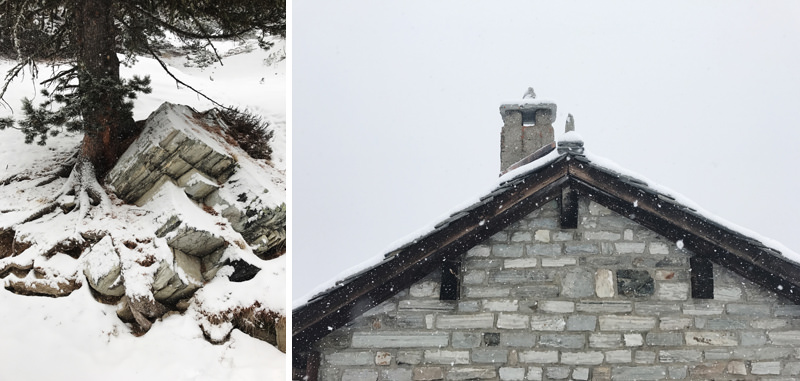
My walks took me through the forests, alongside tumbling ice-green torrents, across fields of virgin, deep snow and up relentless slopes to the lunchtime rendevous. All perfect. Walking has always been more than just getting from A to B for me. It’s meditation, thinking time, a way of doing nothing that makes me feel still productive (a hang-up I’m working on- the art of doing nothing for doing nothing’s sake; what the Italians call ‘il dolce far niente‘)
Rebecca Solnit, one of my favourite writers says that “walking itself is the intentional act closest to the unwilled rhythms of the body, to breathing and the beating of the heart. It strikes a delicate balance between working and idling, being and doing.”
As I walked I was aware of the difference between my walks here and in the safe, known, environment of home; each creak and crunch of my snow boot in the deep compacted snow, each clump of falling snow from a branch, the deep tracks of unknown wild life and the looming mountains reminded me of the difference between nature and the wilderness.

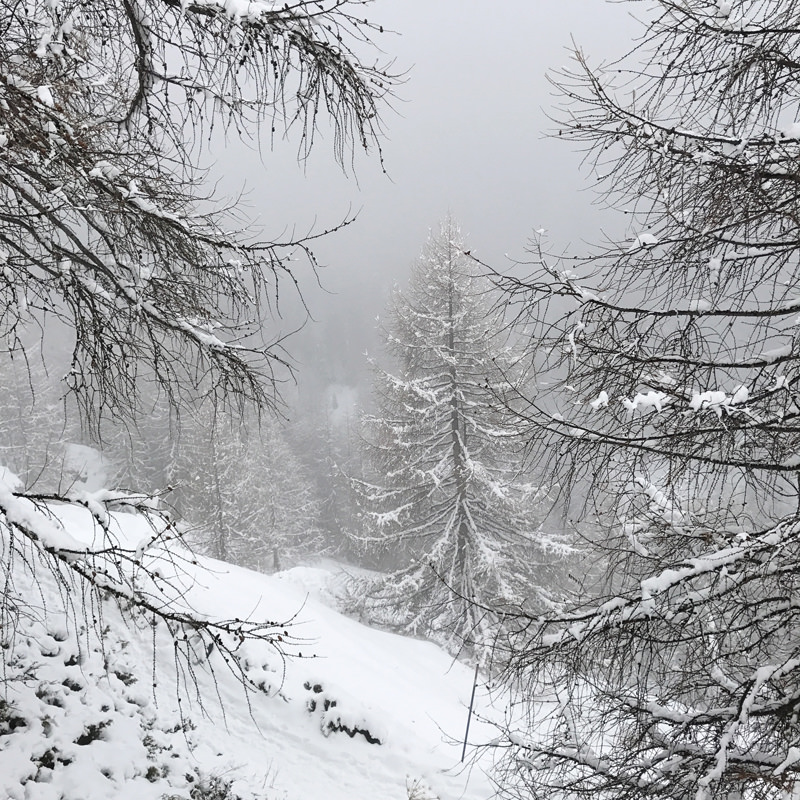
We seem to believe that the world is created by us, for us, and that we can throw whatever we like at it without ill effect. A week even at the soft, pampered edge of the wilderness is a reminder that this is anything but true.


